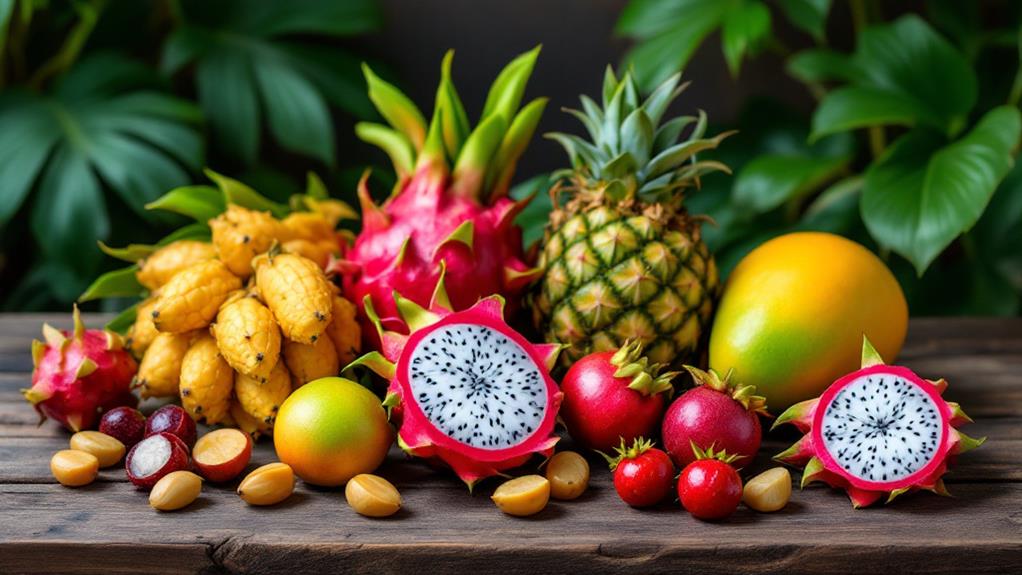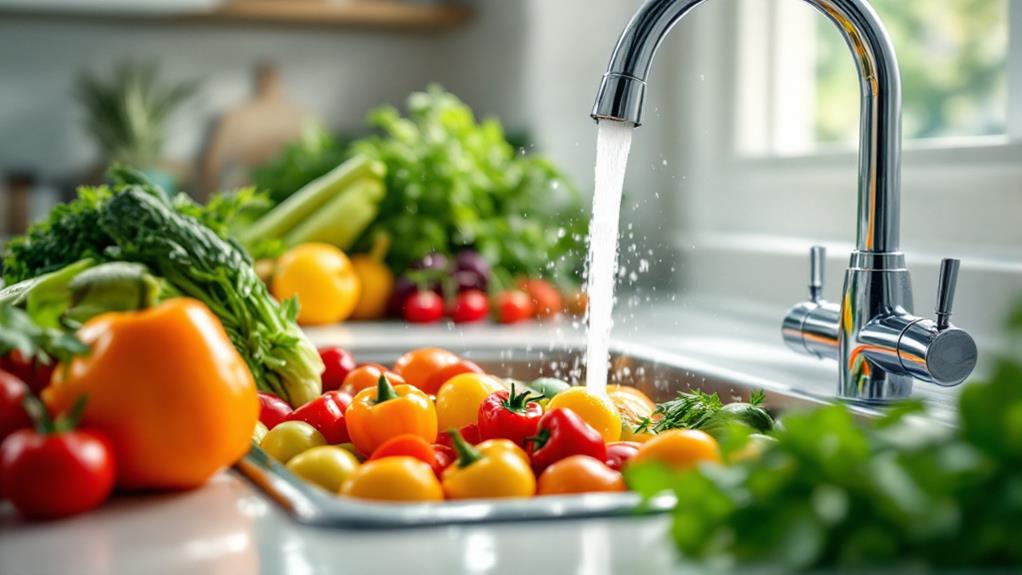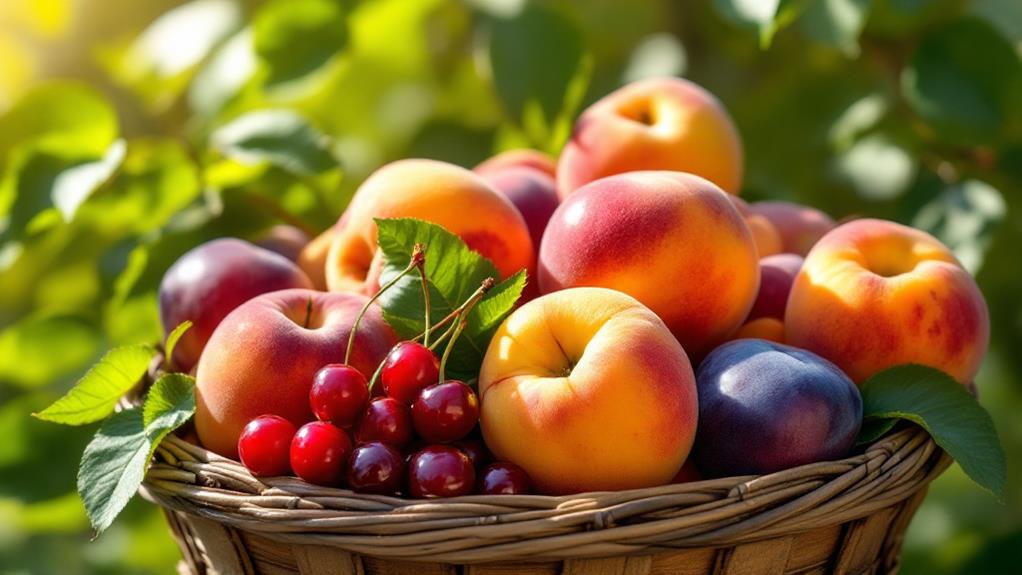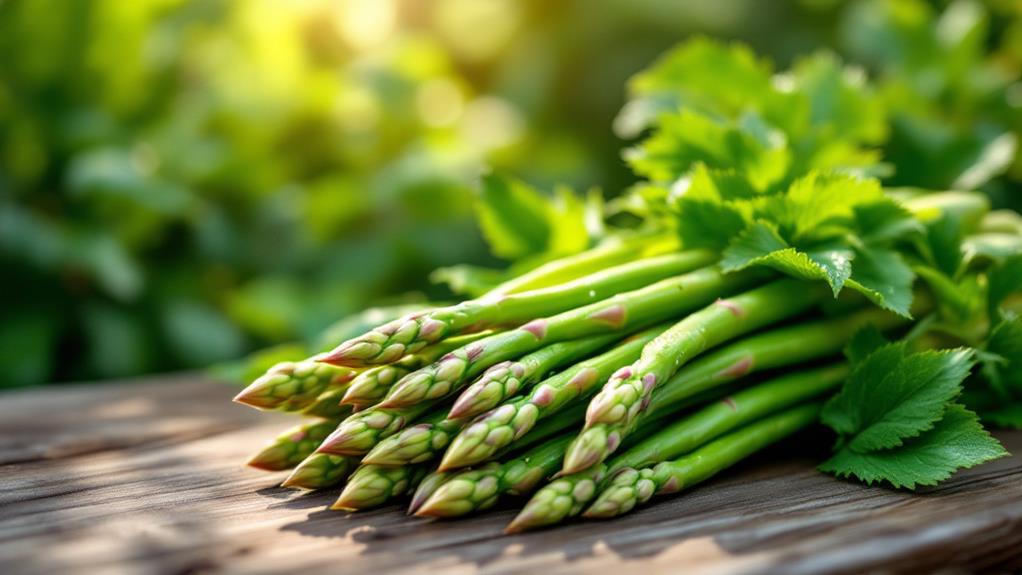The Best Knives for Working With Fruits and Vegetables
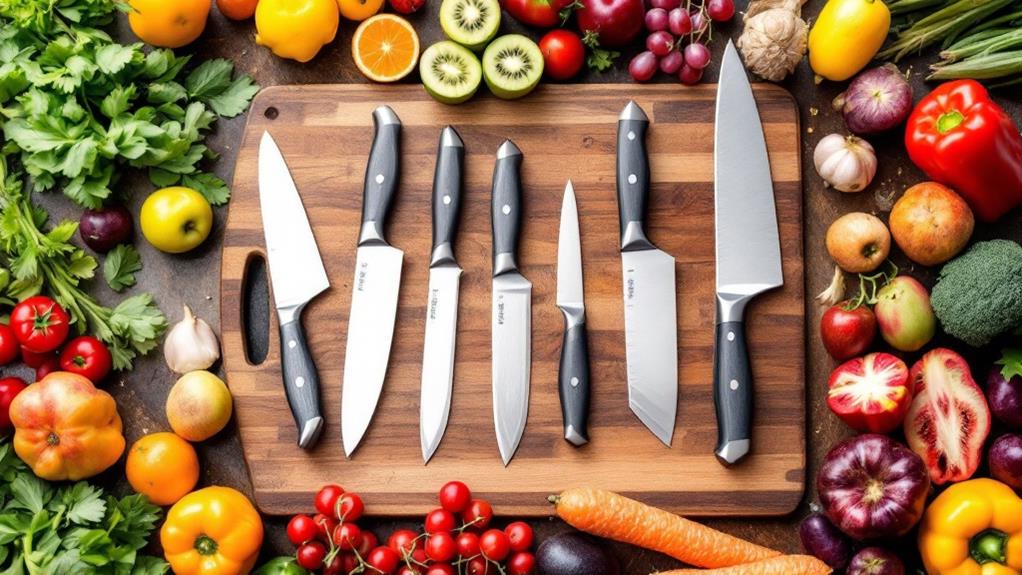
Selecting the best knives for fruits and vegetables improves your kitchen experience and efficiency. Start with a versatile chef's knife for larger produce like squash. For intricate cuts and peeling, rely on a paring knife. A Nakiri knife, with its flat blade, offers precision for vegetable chopping and dicing. Opt for high-carbon or Damascus steel blades to guarantee durability and sharpness retention. Handle materials like wood or plastic provide comfort and grip security. Balance and weight are vital for reducing fatigue during extended use. Familiarize yourself with these fundamentals, and you'll be slicing and chopping like a pro. Investigate further to transform your culinary tasks.
Essential Knife Types
When you're preparing fruits and vegetables, having the right knife makes all the difference. The chef's knife is your go-to for most tasks. Its versatility shines when you're tackling tough produce like butternut squash. With its large, sturdy blade, you can chop, slice, and dice with ease, making it indispensable in your kitchen.
For those finer details, reach for a paring knife. Perfect for small, precise tasks, it's great for peeling apples or trimming strawberries. You'll appreciate its ability to handle delicate slicing and intricate cuts, offering accuracy where it's needed most.
The nakiri knife is a fantastic tool specifically designed for vegetables. Its flat, thin blade provides excellent control and precision, making chopping and dicing vegetables a breeze. You'll find that it improves your efficiency, especially when preparing dishes with lots of veggies.
Each knife serves a specific purpose, catering to different needs in fruit and vegetable preparation. Regardless of whether you're making a fresh salad, a complex stir-fry, or a simple fruit platter, these vital knives guarantee you have the right tools for perfect results every time. Choose wisely, and your kitchen tasks will become more enjoyable and efficient.
Blade Features and Care
A few key features guarantee your knives are perfect for cutting fruits and vegetables. Initially, you'll want a blade that's thin and sharp. A sharp knife with a double-bevel design offers versatility in different cutting tasks and makes sharpening easier. It's vital to choose the right material for your blade. High-carbon or Damascus steel improves durability and helps retain sharpness, making them ideal for frequent use.
To keep your knife in top shape, focus on care and maintenance. Here's how to make sure your blade stays in prime condition:
- Regular Honing and Sharpening: Regularly hone your knife and professionally sharpen it to maintain its edge and performance.
- Proper Cleaning: Hand wash your knife with soap and water. Avoid the dishwasher, as it can dull the blade and damage the handle.
- Safe Storage: Store your knives in protective sheaths or blocks to prevent blade damage and guarantee they remain efficient over time.
- Material Choice: Choose the right knife material for your needs, such as high-carbon or Damascus steel, to improve both performance and longevity.
Choosing the Right Handle
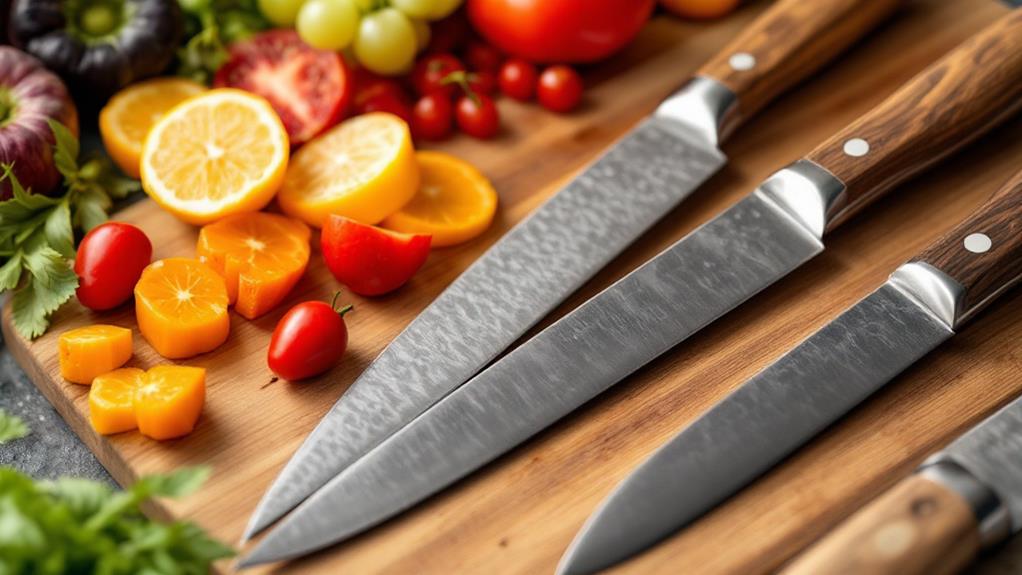
While a sharp blade is essential to cutting efficiency, the handle plays a likewise significant role in your thorough experience. Choosing the right handle material is imperative; it impacts grip security and comfort. Wood offers a warm, natural feel but may require extra care to maintain. Plastic is lightweight and often more affordable, providing a good grip even when wet. Stainless steel is durable and sleek but can be slippery, so look for textured designs if you prefer this material.
Ergonomic designs in knife handles help reduce fatigue during prolonged use, making your culinary tasks less strenuous. Look for handles with contours that fit naturally in your hand, providing comfortable support and control. An ergonomic design also guarantees your fingers stay safely away from the blade, enhancing both cutting efficiency and safety.
Pay attention to handle texture as well. A non-slip surface is essential, especially when you're dealing with wet or slippery ingredients like tomatoes or cucumbers. This texture guarantees grip security, allowing you to slice or dice with confidence. Ultimately, the right handle makes a tangible difference in how enjoyable and efficient your kitchen experience can be.
Weight and Balance Insights
Understanding the weight and balance of a knife is fundamental for improving your kitchen experience. A knife's weight greatly affects how comfortable and controlled you feel while prepping fruits and vegetables. Lighter knives are perfect for delicate tasks like fruit peeling and intricate veggie cuts, giving you ease of handling. On the other hand, a well-balanced knife guarantees the weight is proportionate between the blade and the handle, minimizing fatigue and increasing cutting efficiency. This balance allows for smooth, fluid motions, essential when you're slicing through your favorite produce.
Ergonomic designs play a significant role in achieving this balance. They reduce strain on your wrist and hand, especially during extended chopping sessions. The ideal knife weight often depends on personal preference and the specific cutting tasks you tackle most. Do you prefer a heavier knife for stability or a lighter one for nimbleness? Consider these factors:
- Comfort: Lighter knives offer ease for delicate cuts.
- Efficiency: A balanced knife improves your cutting motions.
- Ergonomics: Design reduces strain during repetitive tasks.
- Control: Balanced feel aids in achieving uniform slices.
Choose wisely to transform your culinary adventures!
Top Brands and Recommendations
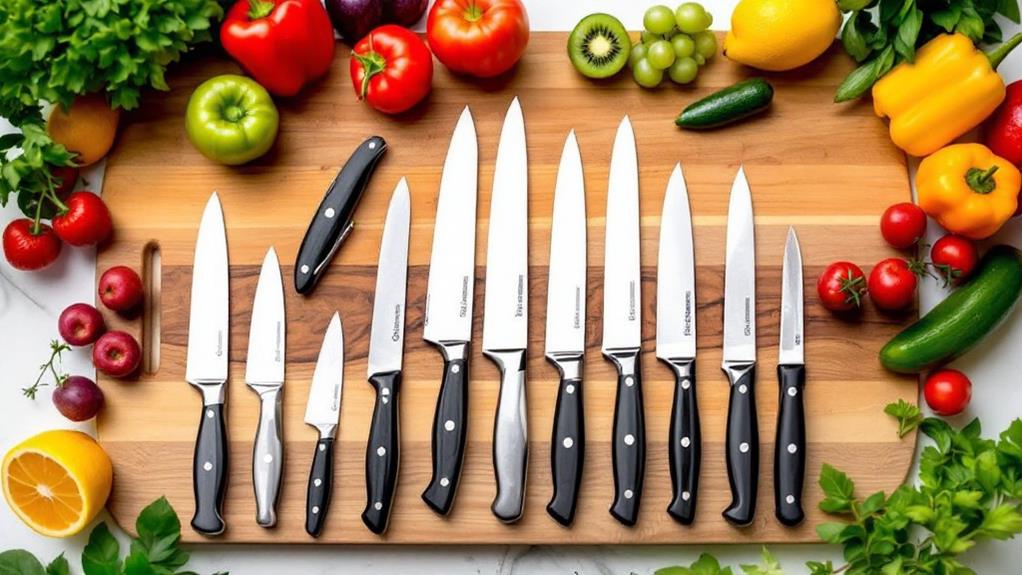
When it pertains to selecting the best knives for fruits and vegetables, a few standout brands consistently deliver exceptional performance and reliability. Zwilling and Wüsthof are leading the charge in the culinary world. Their knives boast durability and craftsmanship that both professional chefs and home cooks love. If you're on the hunt for the best knives for cutting, the Shun Classic Chef's Knife and Victorinox 8-Inch Grand Maitre Chef's Knife are excellent choices. They offer versatility and effectiveness, perfect for any slicing and dicing task involving vegetables.
Japanese knives, known for their precision, shine in this arena. The Zwilling Gourmet Nakiri Knife is specifically designed for vegetable preparation, making it an excellent pick if precision is your priority. For those intricate tasks like peeling and trimming, the Wüsthof Classic Ikon Paring Knife provides a comfortable grip and sharp edge, ensuring you perform these tasks with ease.
If you're particularly fond of nakiri knives, the Tojiro Nakiri Knife and Shun Classic Nakiri Knife are highly recommended. These high-quality Japanese knives excel in chopping and dicing, offering you great performance with prices starting around $60, with premium options also available.
Techniques for Safe Cutting
Selecting the right knife is only part of the equation; knowing how to use it safely is just as crucial. To prevent mishaps in the kitchen, mastering a few fundamental techniques can make all the difference in your cutting efficiency and safety. Here's a quick guide to keep you on track:
- Stabilize Your Ingredients: Always cut a small slice off the bottom of round fruits and vegetables to create a flat surface. This prevents them from rolling and guarantees a stable base for cutting.
- Choose the Right Knife: Use a chef's knife for larger items that require more force and a paring knife for intricate tasks. This improves your control and precision, making each cut smoother and safer.
- Master Cutting Techniques: Familiarize yourself with techniques like dicing, mincing, and slicing. These not only advance your food preparation skills but also make your work more consistent and efficient.
- Proper Grip and Practice: Maintain a firm grip on the knife handle, keeping fingers away from the blade. Regular practice builds confidence and proficiency, so always cut away from your body to avoid accidents.

